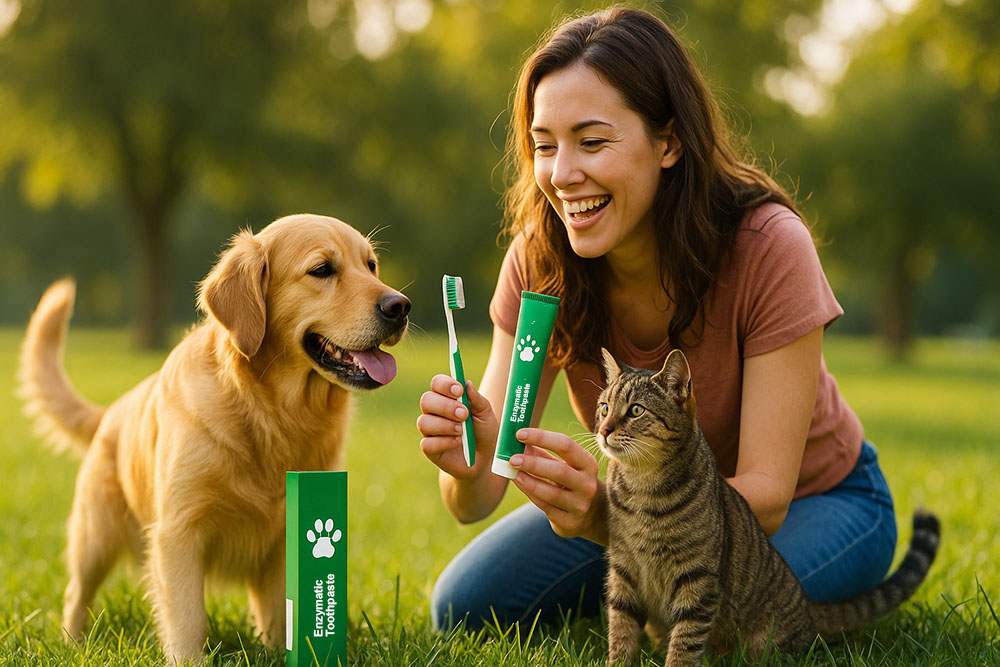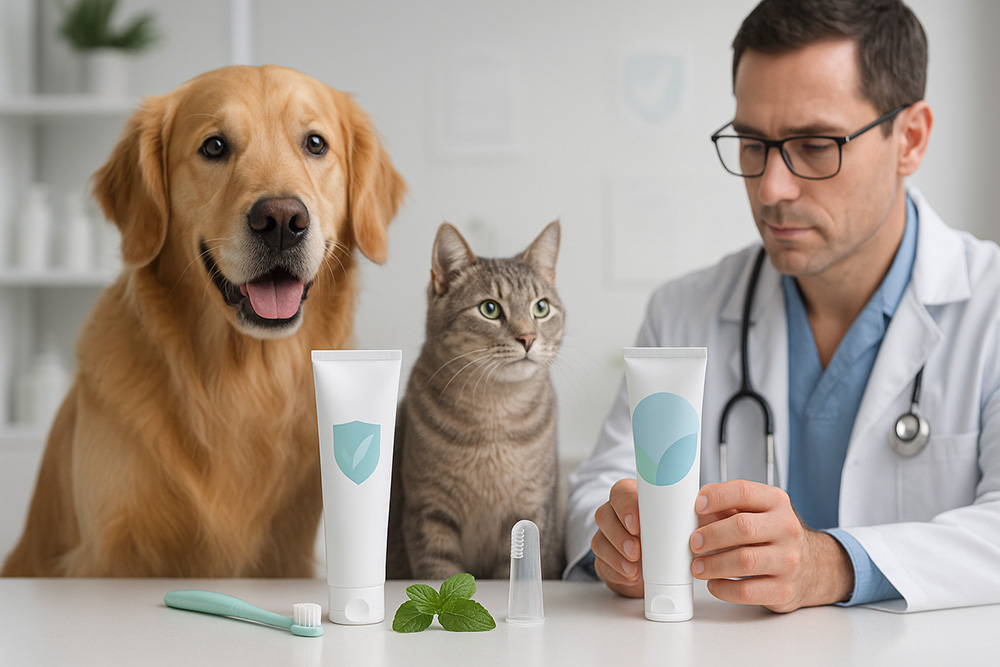Sustainable Toothpaste Manufacturing Trends
Introduction
In today’s increasingly eco-conscious market, sustainability is not only an ethical imperative but also a strategic business advantage. Oral care, and specifically toothpaste manufacturing, is experiencing a paradigm shift toward green production and sustainable innovation. With global consumer demand for environmentally friendly products on the rise, leading toothpaste manufacturers are reevaluating their production processes, material sourcing, packaging, and overall value chain practices.
Lidercare, renowned for its industry expertise and innovative spirit, is at the forefront of this green revolution. By integrating sustainable practices into every phase of production—from raw material selection to advanced digital manufacturing technologies—Lidercare is paving the way for a cleaner, healthier future for consumers and the planet. This article explores the market dynamics, technological advancements, best practices, and future trends in sustainable toothpaste manufacturing, while offering actionable insights for distributors, procurement managers, and industry decision-makers.
Part I: The Global Shift Toward Sustainability in Oral Care
A. Rising Environmental Consciousness in Consumer Behavior
The modern consumer is increasingly informed and concerned about the environmental impact of their purchases. Recent surveys and research studies indicate that more than 70% of consumers consider sustainability as a key factor in their buying decisions, especially for everyday products such as toothpaste. With climate change and environmental degradation receiving heightened attention globally, consumers are turning away from brands that lack eco-friendly initiatives.
Key trends include:
Increased demand for sustainable packaging: Shoppers now favor toothpaste products packaged in biodegradable or recyclable materials.
Preference for natural formulations: There is a growing trend towards chemical-free, naturally derived ingredients.
Transparency and ethical production: Consumers expect brands to be open about their sourcing and manufacturing processes.
B. Regulatory and Market Pressures
Governments and regulatory agencies around the world are also championing sustainability by enforcing stricter environmental standards. For instance:
The European Union and several Asian countries have imposed stringent requirements on chemical usage and packaging waste.
New labeling laws mandate transparency regarding environmental impact, from carbon footprint to recyclability.
These regulatory measures compel toothpaste manufacturers to innovate and adopt greener practices, ensuring compliance while opening up potential cost savings from energy efficiency and waste reduction.
C. The Economic Case for Sustainability
Sustainable manufacturing isn’t just about ethics—it also makes good business sense. By minimizing resource waste and reducing energy consumption, companies can achieve substantial cost savings and enhanced operational efficiency. Moreover, brands that invest in sustainability tend to build stronger customer loyalty, improve brand reputation, and ultimately enjoy more robust growth in both domestic and international markets.
Part II: Technological Innovations Redefining Toothpaste Manufacturing
A. Advanced Formulation Techniques for Eco-Friendly Oral Care
One major area of innovation in toothpaste manufacturing is the development of advanced formulations that reduce environmental impact without compromising efficacy. These innovations include:
Natural Active Ingredients: Incorporating botanical extracts and essential oils not only appeals to eco-conscious consumers but also provides natural antibacterial and whitening benefits.
Innovative Fluoride Alternatives: Researchers are exploring alternatives to traditional fluoride compounds, such as nano-calcium carbonate, that offer remineralization benefits while potentially reducing environmental harm.
Biodegradable Binders: Using natural polymers that break down more easily can make the toothpaste formulation more eco-friendly without affecting texture or taste.
These formulation breakthroughs are driven by close collaboration between research institutions, technology providers, and leading manufacturers like Lidercare.
B. Cutting-edge Production Technologies
Modern toothpaste manufacturing now leverages digital and automated production systems designed to enhance both efficiency and sustainability:
IoT and Smart Factories: Incorporating Internet of Things (IoT) sensors allows real-time monitoring of production lines, ensuring optimal resource use and rapid response to process deviations.
Artificial Intelligence (AI): AI-driven quality control systems can detect inconsistencies or defects much faster than human inspectors, thereby reducing waste and minimizing the number of rejected products.
Automation & Robotics: Streamlined and automated production not only enhances productivity but also significantly lowers energy consumption by optimizing machine usage throughout the day.
These technological advancements contribute directly to reduced waste, lower energy requirements, and more predictable manufacturing outcomes—critical components of a sustainable production strategy.
C. Digital Integration for Sustainability Tracking
Another key innovation is the integration of advanced data analytics and digital tracking systems. By harnessing real-time data, companies can measure their environmental impact accurately and adjust operational parameters accordingly. Digital dashboards provide visibility into key sustainability metrics such as:
Carbon emissions per production run
Energy efficiency ratios
Waste generation and recycling rates
Such data-driven approaches empower companies like Lidercare to continuously improve their sustainability performance, making them more agile in responding to both market and regulatory shifts.
Part III: Green Supply Chain Management and Sustainable Sourcing
A. Eco-friendly Raw Material Sourcing
The backbone of sustainable toothpaste manufacturing lies in responsible raw material sourcing. As consumers and regulators alike demand more accountability, manufacturers are increasingly turning to green suppliers. Strategies include:
Certified sustainable ingredients: Collaborating with suppliers who adhere to international sustainability standards, such as RSPO-certified palm oil and FSC-certified natural abrasives.
Local sourcing: Reducing transportation emissions by procuring materials from nearby regions, thus supporting local economies and reducing carbon footprints.
Recycled and upcycled materials: Utilizing recycled resources wherever possible, such as reclaimed silica or plant-based binders, can help close the loop in material supply chains.
B. Environmentally Responsible Packaging
Packaging is one of the most visible aspects of any consumer product and holds immense potential for sustainability improvements:
Biodegradable Tubes and Recyclable Materials: The adoption of biodegradable polymers for packaging helps reduce the environmental burden when products reach the end of their lifecycle.
Minimalist Packaging Designs: Using less material overall by adopting minimalist and innovative packaging designs that still ensure product integrity can significantly cut down waste.
Return and Refill Programs: Some leading companies have pioneered refillable packaging models, giving consumers the option to purchase refills and reduce plastic waste.
C. Collaborative Supply Chain Innovations
To further promote sustainability, companies are adopting collaborative approaches across their supply chains. This includes:
Partnerships with Green Logistics Providers: Collaborating with transportation partners that focus on reducing emissions by using electric vehicles or optimizing delivery routes.
Joint Ventures in Recycling Programs: Working together with other industry players to establish recycling and waste management initiatives can set industry benchmarks for environmental stewardship.
Technology Sharing: Engaging in partnerships where technologies and best practices are shared among supply chain partners to drive broad-based improvements in sustainability.
In one standout example, a leading toothpaste manufacturer—recognized in the industry as a top eco-friendly toothpaste producer—has established a program that integrates recycled materials into both formulation and packaging. This collaboration has reduced waste by 25% while significantly bolstering brand reputation.
Part IV: The Role of Digital Transformation in Sustainable Growth
A. Leveraging Big Data for Environmental Efficiency
Digital transformation is a central pillar of sustainable innovation in toothpaste manufacturing. By leveraging big data analytics, companies can optimize production processes and resource utilization to achieve greener operations. Key applications include:
Energy Consumption Analytics: Monitoring real-time energy usage helps pinpoint inefficiencies, enabling adjustments that reduce overall consumption.
Predictive Maintenance: AI algorithms predict equipment failures before they occur, ensuring that machines operate at peak efficiency and minimizing downtime.
Supply Chain Optimization: Data-driven insights enable manufacturers to optimize logistics and inventory management, reducing waste and cutting down carbon emissions from transportation.
B. Enhancing Consumer Communication Through Digital Channels
In the modern market, transparency and consumer engagement are paramount. Digital channels—ranging from social media to dedicated sustainability dashboards on corporate websites—provide platforms where companies can share their sustainability journey with consumers. This dialogue not only builds trust but also empowers consumers to make informed choices about the products they buy.
Digital marketing strategies in the B2B space, including targeted campaigns and webinars, can also highlight how sustainability initiatives are incorporated into every step of the product lifecycle. This fosters stronger partnerships with retailers, distributors, and procurement managers who prioritize environmental impact in their sourcing decisions.
C. Integrating CRM Systems for Better Sustainability Tracking
Customer Relationship Management (CRM) platforms are evolving to include sustainability metrics as part of their dashboards. By integrating these systems, manufacturers gain enhanced visibility over:
Customer preferences for eco-friendly products
Sales impact of sustainable practices
Feedback loops for continuous improvement
These insights not only drive better product innovation but also allow companies to craft compelling narratives around their sustainability efforts—helping to differentiate brands in a competitive marketplace.
Try Lidercare Now!
We Help You Launch New Products, And Continue To Grow. Try Us With 20% Off Your First Order!
Part V: Strategic Best Practices and Future Trends in Sustainable Oral Care
A. Emerging Trends and Future Directions
Looking forward, the toothpaste manufacturing landscape is poised for continuous evolution driven by several emerging trends:
Smart Oral Care Solutions: Integration of digital technologies with oral care devices (e.g., smart toothbrushes that sync with mobile apps) is set to redefine consumer interaction.
Personalization and Customization: As data-driven insights grow, toothpaste formulations may become increasingly tailored to individual consumer needs, including personalized sustainability options.
Circular Economy Models: Future business models may increasingly emphasize circularity—minimizing waste, promoting recycling, and extending product lifecycles through innovative use of materials.
Eco-Innovation Partnerships: Collaborations between industry players, tech innovators, and environmental experts will be crucial in developing breakthrough technologies that lower environmental impact while improving product performance.
B. Actionable Strategies for B2B Partners
For distributors, procurement managers, and business decision-makers, aligning with manufacturers that embrace green innovation can yield significant long-term benefits. Here are several strategic recommendations:
Prioritize Sustainability in Vendor Selection: When choosing partners, look for those who not only comply with environmental standards but also actively invest in new technologies and sustainable practices.
Invest in Digital Tools: Leverage AI, big data, and CRM systems to track performance metrics and drive continuous improvement in sustainable production.
Adopt Collaborative Supply Chain Models: Build partnerships that facilitate shared innovation and cost savings—ensuring that all stakeholders benefit from environmentally sound practices.
Capitalize on Regulatory Incentives: Monitor government programs and subsidies aimed at reducing carbon footprints and energy usage; these incentives can offset initial investments in sustainable technologies.
Enhance Transparency and Accountability: Utilize digital platforms to communicate your sustainability achievements and commitments clearly to stakeholders, boosting brand trust and loyalty.
C. Best Practices for Long-term Sustainable Growth
Successful companies in the oral care sector share several key traits when it comes to sustainable practices:
Vision and Commitment: Green initiatives must be embedded within the core values and long-term strategy of the organization.
Innovation and R&D: Continuous investment in research drives the evolution of new, eco-friendly product formulations and production methods.
Agile Supply Chain Management: Flexibility in sourcing and logistics is essential to adapt to environmental constraints and market demands.
Collaborative Networking: Sharing best practices across industry clusters and partnering with technology firms can accelerate progress toward sustainability goals.
Many industry leaders in toothpaste manufacturing have demonstrated that sustainability and profitability can go hand in hand. For instance, a renowned sustainable toothpaste manufacturer has reported improvements in both market share and cost efficiency by embracing a circular approach to material sourcing and production management.
Conclusion
The future of oral care is undoubtedly green. As global environmental pressures mount and consumer expectations shift, sustainable innovation in toothpaste manufacturing is no longer an option—it is a necessity. Companies that take bold steps toward integrating eco-friendly practices into their operations will not only secure a competitive edge in the marketplace but also contribute to a healthier, more sustainable world.
Lidercare’s commitment to innovation and sustainable practices sets a benchmark in the industry. By leveraging advanced technology, green supply chain management, and digital transformation, Lidercare is redefining how toothpaste is produced and delivered. For distributors, procurement managers, and B2B partners, aligning with forward-thinking manufacturers is key to future success in an era dominated by sustainability.
In conclusion, by embracing eco-friendly innovation, investing in smart technologies, and fostering collaborative partnerships, the oral care industry is poised for a transformative journey toward long-term sustainability and profitability. As market dynamics evolve, sustainable practices will remain at the heart of strategic growth—propelling companies like Lidercare to new heights and setting a definitive standard for the future of toothpaste manufacturing.
Table of Contents
Awesome! Share to:
Latest Blog Posts
Check out the latest industry trends and take inspiration from our updated blogs, giving you a fresh insight to help boost your business.




